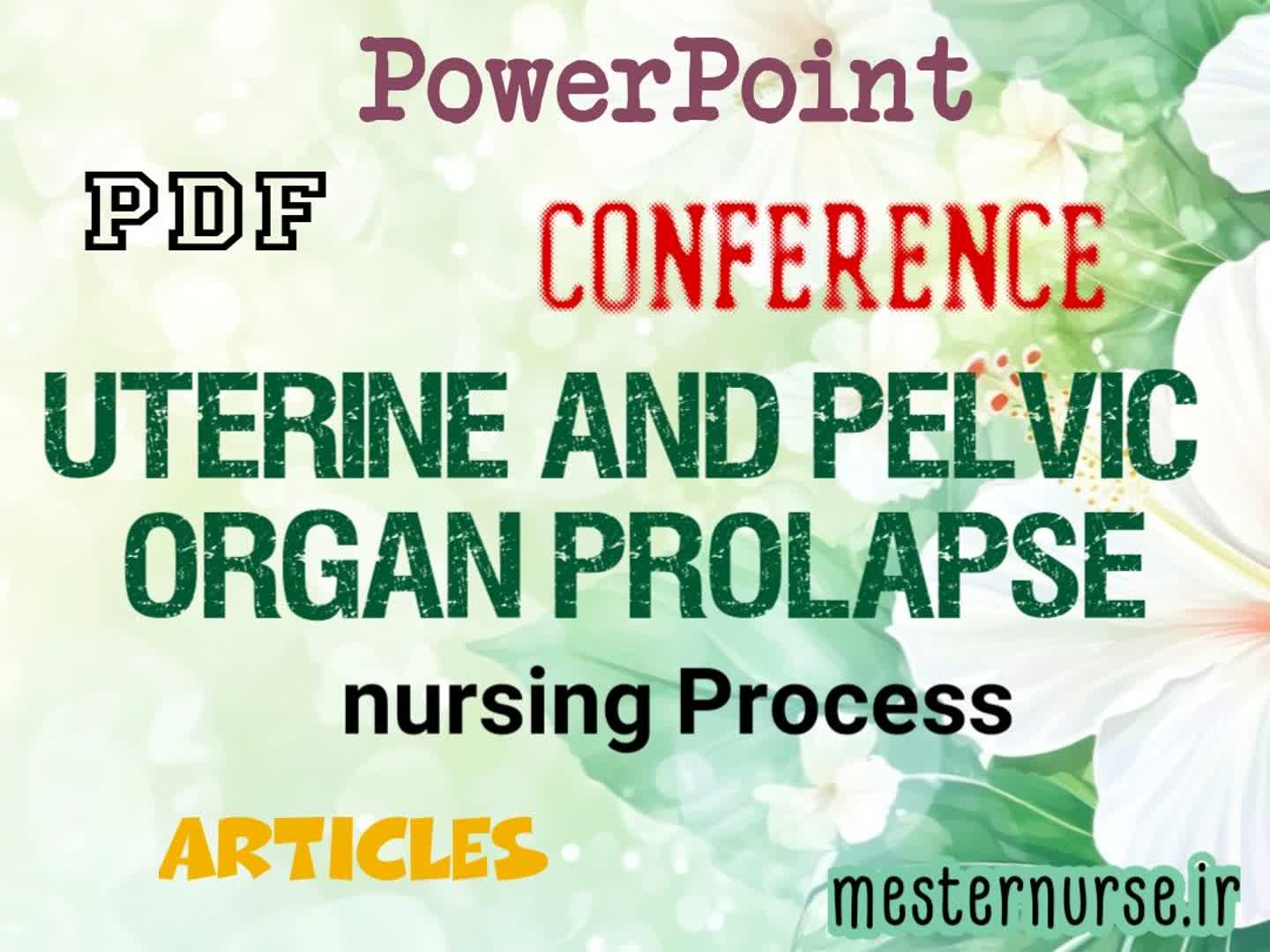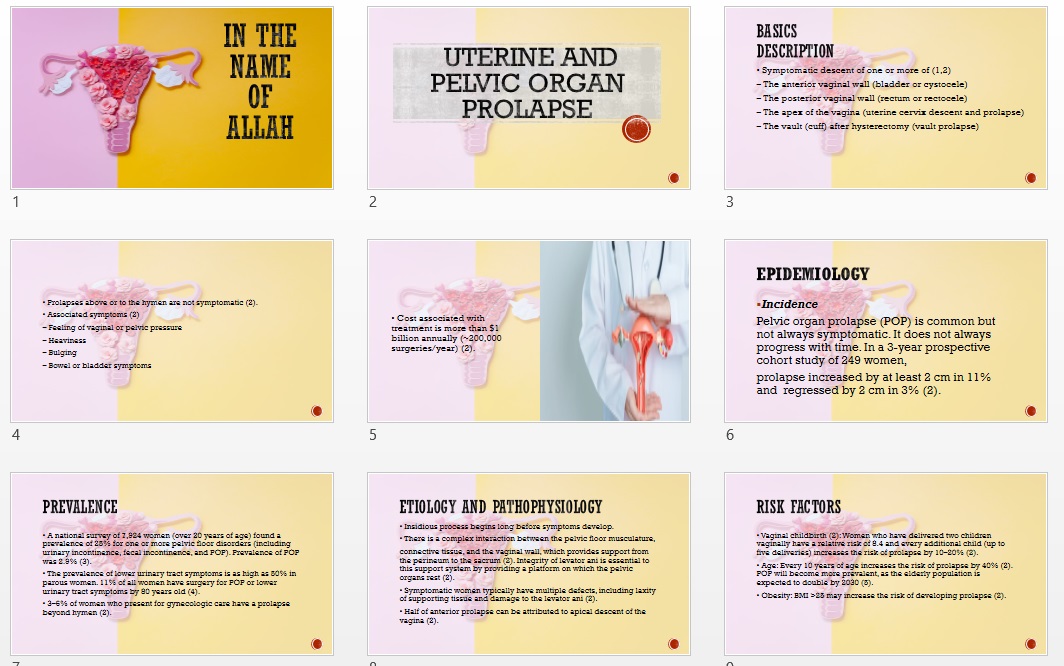توضیحات
UTERINE AND PELVIC ORGAN PROLAPSE PPT
UTERINE PROLAPSE PPT :BASICS
DESCRIPTION
• Symptomatic descent of one or more of (1,2)
– The anterior vaginal wall (bladder or cystocele)
– The posterior vaginal wall (rectum or rectocele)
– The apex of the vagina (uterine cervix descent and prolapse)
– The vault (cuff) after hysterectomy (vault prolapse)
• Prolapses above or to the hymen are not symptomatic (2).
• Associated symptoms (2)
– Feeling of vaginal or pelvic pressure
– Heaviness
– Bulging
– Bowel or bladder symptoms
• Cost associated with treatment is more than $1 billion annually (~200,000
surgeries/year) (2).
EPIDEMIOLOGY
Incidence
Pelvic organ prolapse (POP) is common but not always symptomatic. It does not
always progress with time. In a 3-year prospective cohort study of 249 women,
prolapse increased by at least 2 cm in 11% and regressed by 2 cm in 3% (2).
Prevalence
>>>> A national survey of 7,924 women (over 20 years of age) found a prevalence
of 25% for one or more pelvic floor disorders (including urinary incontinence,
fecal incontinence, and POP). Prevalence of POP was 2.9% (3).- The prevalence of lower urinary tract symptoms is as high as 50% in parous
women. 11% of all women have surgery for POP or lower urinary tract
symptoms by 80 years old (4). - 3–6% of women who present for gynecologic care have a prolapse beyond
hymen (2). -
دیگر اسلاید های پاورپوینت شامل موارد زیر می باشد
ETIOLOGY AND PATHOPHYSIOLOGY
RISK FACTORS
GENERAL PREVENTION
COMMONLY ASSOCIATED CONDITIONS
DIAGNOSIS
HISTORY
PHYSICAL EXAM
DIFFERENTIAL DIAGNOSIS
DIAGNOSTIC TESTS & INTERPRETATION
Initial Tests (lab, imaging)
Follow-Up Tests & Special Considerations
TREATMENT
GENERAL MEASURES
MEDICATION
First Line
ISSUES FOR REFERRAL
ADDITIONAL THERAPIES
SURGERY/OTHER PROCEDURES
ONGOING CARE
PATIENT EDUCATION
COMPLICATIONS
REFERENCES
CLINICAL PEARLS
همچنین در صورت تمایل برای دانلود نسخه فارسی پاورپوینت اینجا کلیک کنید.
توضیحات تکمیلی
| فرمت | پاورپوینت |
|---|---|
| زبان | انگلیسی |
| حجم | 1 mb |
| تعداد اسلاید | 37 |


























نقد و بررسیها
هنوز بررسیای ثبت نشده است.